Table of Contents
Introduction
“Who will die in COVID-19?”
“Is there a simple number that can be used to identify which of the COVID-19 infected patients will develop complications and will require additional support?“
A recently conducted survey shows that this is a burning issue in today’s pandemic haunting everyone.
It’s clear that COVID-19 infection can’t be really stopped. One wave after the other have been raging across the world and will continue. It’s really terrifying. But we also know that majority recover easily. Only a few require hospitalization. Despite this fact, each wave of this pandemic overloads the existing healthcare systems with hospitals running out of beds.
At present there is really no way to predict right at the start which patient infected with COVID-19 will develop complications. If such prediction is made possible, we shall be able to focus our resources on only those who really need, and decisively intervene at a very early stage- while other patients might just relax at their homes. Such early intervention focused on the ones who will eventually develop complications on COVID-19 infection will significantly reduce hospitalization rate and mortality. But is there a way to accurately predict which patient will deteriorate and will require such early intervention?
This is exactly what we will try to answer. Let’s see if we succeed.
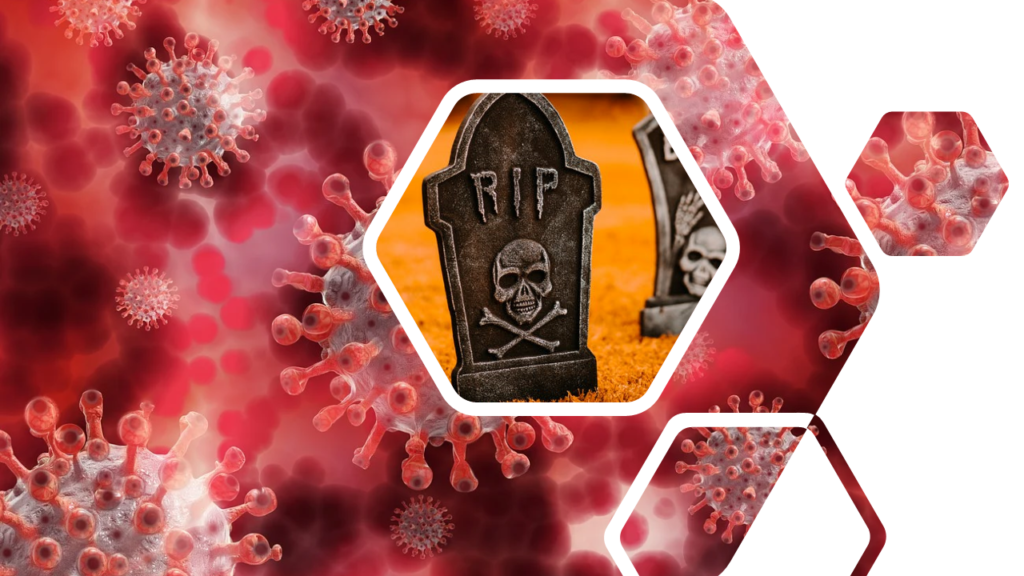
This post is the first part of the four-parts series that intends to eventually show how we can easily predict outcomes of COVID-19 infected patient at a very early stage.
(I would have loved to cover the entire thing in just one single post. But, its really important for the reader to understand the fundamentals of virology and immunology involved. And I will be covering those in a very simple layman language. And a single post covering all these aspects will easily cross 20,000 words- nearly a book in itself!)
The Black Swan of 2020
A black swan event is an unpredictable event that is beyond any possible human prediction or expectation. Such an event has potentially severe consequences. These events are extremely rare, have severe impact, and once they happen- there develops a widespread agreement that the events were obvious in hindsight. However rare they are, they do happen time and again; and when they happen, they make us realize that this world is too complicated and random and we are too small to fathom what future really looks like.

2020 became a year marking a black swan event that has changed the face of the earth. Like a tale of science fiction suddenly engulfing the realms of reality, COVID-19 attacked humanity and has changed the very fabric of life as we know it. We had been living in an era where popular belief feared that digital world is destroying our childhood. We would read scholarly articles on how screen time damages both brain and vision[1][2] and how addiction to Facebook is more dangerous that opium addiction[3]. New age parents would boast how they did not ever allow their kids to see Youtube videos on mobile/ipad. Plastic was the face of devil that was threatening to destroy the world [4]. Internet was flooded with blogs on how plastic was killing whales and poisoning our biosphere [5].
Then one fine day China announced discovery of new virus that was causing flu like disease and killing a few. Soon that few became many and within less than a month this flu like disease became a global pandemic that relentlessly killed people. Like the virus, the spread of fear has been of a pandemic scale.
It will take a long long time to really determine if this fear was justified. But it’s a disease that startled us with sheer numbers. Although <1.5% of those infected die and majority recover, millions across the world have died and the deaths will continue till a definite solution is found. Spellbound by fear of death, most countries locked down their citizens. Laws were enforced to force rebel souls from venturing out of their houses. Ultimately fear of virus and law succeeded in driving a mass behaviour that was not imaginable earlier in social animals as humans are.
People started staying inside their houses. Mobile phones and ipads became primary sources of communication with each other. These handheld devices not only served as a major link to connect humans, but also started serving as the most important channels of entertainment. No more proponents of avoiding screen time! Stalwarts of education who opposed use of mobile phones by children, now started launching mobile enabled education programs[6][7]. COVID-19 made us more virtual than we ever were!
Lockdowns and social distancing was coupled with another behavior- rampant use of masks and other face covering devices along with sanitizers. The same plastic that was once poised to become earth’s number 1 enemy suddenly became a savior. Production of millions of PPEs and bottles holding sanitizing agents became possible because around 100 years earlier in 1907 a Belgian-American chemist named Leo Baekeland created Bakelite, the first real synthetic, mass-produced PLASTIC[8].
Despite all measures, COVID-19 pandemic is still spreading furiously across. Not only are new patients getting diagnosed in swarms, recovered patients are also getting re-infected. Though majority recover, tens of thousands are dying daily. Who are these people who die? Can we predict which infected patient will surely progress in terms of severity and have increased probability of mortality?
Why are we failing?
COVID-19 Mutates Rapidly
Online scientific journals are flooded with articles on COVID-19. Every country has deployed its best scientific minds in unravelling secrets of this virus. So has pharmaceutical industry. The mortal fear of global scale is the sure shot marker of a potential market worth billions of dollars. Antivirals and vaccines lie at the heart of all these research initiatives.
But, it’s a RNA virus. DNA and RNA are two different ways of storing and reading genetic material that contains the blueprint of life of any organism. RNA was the first to evolve as life begin to wriggle out its initial forms on planet earth [9]. Being heat stable, it was the best way of storing genetic information for living organisms when the earth was still quite hot. But RNA is not very secure– the information contained can get easily corrupted and changed. Hence mutations are fairly rapid. (Changes in genetic information are called mutations. Each mutation causes the resultant organism to be different from others). As life became more complex and capable, rapid mutations were not needed for survival of species. More important was to secure the information that made species so capable of surviving. DNA slowly started becoming the database of choice. DNA is much more secure than RNA and less susceptible to mutations. [10][11][12] [13]
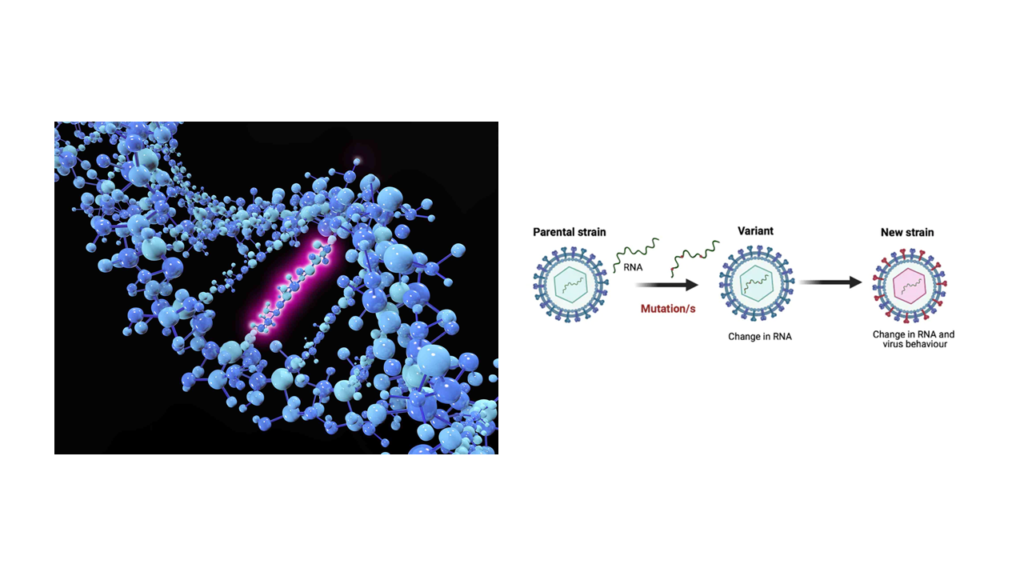
For survival of species which are small and fragile and are susceptible to destruction from numerous sources, RNA is the best option- its propensity towards constant and rapid mutations allows such species to keep surviving despite survival challenges. It’s always hit and miss. Many mutants won’t survive. But some will and they will multiply. As they multiply there will be more mutants. Few will survive better than others and this expansive cycle will keep continuing. And this makes it difficult to really eliminate RNA based viruses.[13]
COVID-19 can easily become resistant to Antivirals
Antivirals work on certain target molecules necessary for survival and propagation of viruses. The structure of these molecules is dependent on the genetic material coding for those molecules. If the genetic material changes, molecular structure of the target will change eventually making the antiviral impotent. So, typically it’s a matter of time before the COVID-19 becomes resistant to antivirals such as Remdesivir or Faripiravir. More dangerous is the theoretical possibility of evolution of a mutant which is resistant to all antivirals– probability of such an event will keep increasing in a Bayesian manner as we keep using these antivirals indiscriminately.[14]
Rapid mutations can cause vaccines to fail
Similar will be the fate of any vaccine. Vaccines too work on certain targets that have specific molecular structures. These targets are known as epitopes against which vaccine trains our body to produce targeted weapons known as antibodies. Each epitope introduced by vaccine will lead to development of antibodies specific to only that epitope. These epitopes represent structures from actual viral particles. If virus mutates, epitopes will change, and the antibodies will not work. RNA virus is like a lock which keeps changing the structure of levers inside. An antibody is like a key. If lock changes, key won’t work [15]
That’s why flu vaccine doesn’t work completely. Flu is also a RNA based virus and it also mutates quite fast. So in each season there are multiple variants of flu virus and general aim to vaccinate population against the most common strain. Problem is, there is no way you can predict which strain will predominate the next season, although use of artificial intelligence and machine learning potentially will make these predictions much closer to reality. [16]
But, fact is, flu has existed since centuries, and it keeps killing half a million across the world every year. This being despite the fact that we know everything about flu virus, and we have antivirals and vaccines since more than couple of decades now. So, we have given up- we have accepted that flu can’t be eliminated and we are now ok with the fact that every year half million across the world will succumb to flu. [16]
Vaccine will keep getting developed
This is one more reason why every big pharmaceutical company out there is jumping into development of vaccine against COVID-19. A very realistic picture of future is that COVID-19 will become a part of our life. We will soon accept that it cannot be eliminated. There will be COVID-19 seasons just like flu seasons. And for every season, millions will be vaccinated with no guarantee that all will get 100% protection since there will be so many strains of COVID-19. It’s a business with insurmountable potential and no single company will have enough production capacity to serve the needs of the entire world on a recurring basis. So, every company with some viable vaccine will potentially earn billions every year for perpetuity [17].
On 11 August 2020 Russians became the first to launch vaccine against COVID-19. Gam-COVID-Vac, commercially known as Sputnik V, is a COVID-19 vaccine that was developed by Russia’s Gamaleya Research Institute of Epidemiology and Microbiology [18]. Of course, there has been a bit of skepticism, but world was slowly witnessing a sense of optimism. In next few months companies like Pfizer, AstraZeneca, Moderna launched their respective vaccines. Local companies in countries like India and China have also jumped into this frenzy of developing vaccines against COVID-19. How effective they will be in shielding the human race from COVID-19 is a tale that will be unraveled in coming months.[19]
But vaccines are for prevention and can’t kill the virus. Once infected, this virus can be killed antivirals such as Favipiravir and Remdesivir but their use must be judicious else soon we will have COVID-19 strains resistant to these antivirals. One more fact that we will soon explore is that its not the virus which kills- so killing the virus itself might not suffice after a point of time.
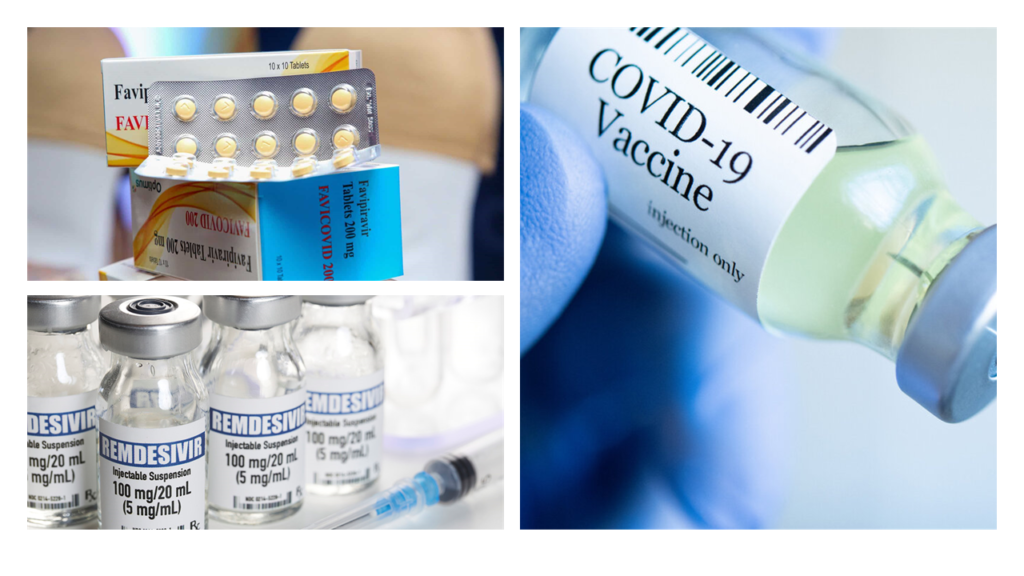
<1% Die…but how to find out who will die in COVID-19?
While all these vaccines and antivirals are being researched with complete rigor and feverish pace, we can’t ignore the fact that majority suffer mildly with slight fever and body ache and recover; there are <1% of the infected who land up into critical complications [20]. One such dreaded complication is called cytokine storm- it is this complication that is generally the real cause of mortality in majority who die due to COVID-19 infection.
If we have a mechanism to predict which of the infected ones will progress and might suffer from cytokine storm, we can focus aggressive treatment protocols only on those. Such prediction can reduce burden on healthcare system by a whopping 90% and we will be able to increase recovery rates further.
Lot of research has happened on this front. What we do know is that elderly population are more susceptible to progress into cytokine storm. What we also know is that if one has co-morbidities such as diabetes, CAD, hypertension etc again the chance of developing cytokine storm due to COVID-19 rises significantly. But it’s not that simple and its actually quite confusing. For example, post reading such guidance what will you do if you find a 60 year old infected with COVID-19? What age is old? Will you hospitalize a 55 year old man with COVID-19 who is currently having mild symptoms and treat h aggressively? What about a young boy with Type 1 Diabetes Mellitus and no other diseases?
In today’s world where there is already a pandemic of diabetes and hypertension and CAD, nearly everyone potentially will fit the above parameter of ones with higher probability of severe COVID-19. Also, old age definition can’t be universal. A 80 year old man from Okinawa is probably much younger biologically than a 60 year old man from Delhi. Genetics, food, environment all contribute to biological age and most often chronological age is an erroneous measure of biological age.
A more efficient question to ask is- what is a common parameter between old age and diabetes and hypertension and CAD? Can that parameter be measured objectively? More importantly can that parameter directly predict probability of which COVID-19 patient will progress into severe stages, even before that person has contracted COVID-19?
The Spark That Set World Ablaze
Before we start the beautiful story of picturizing our body’s defense system and how it is exploited by a trivial looking COVID-19 virus, it might be a good (albeit a little boring for few) idea to quickly have a look at the series of events that unfolded in the busy Chinese city of Wuhan that went on to spark a wildfire that is still raging furiously and menacingly.
(Note: This section of my post is a bit busy with dry looking numbers and trivia; and if you are already well updated, it’s ok to skip this part)
China is famous for being the most populous country in the world, at more than 1.4 billion. But it is also a large country- it is actually the second-largest country in the world by land area after Russia, and is the third largest by total area, after Russia and Canada.[21]
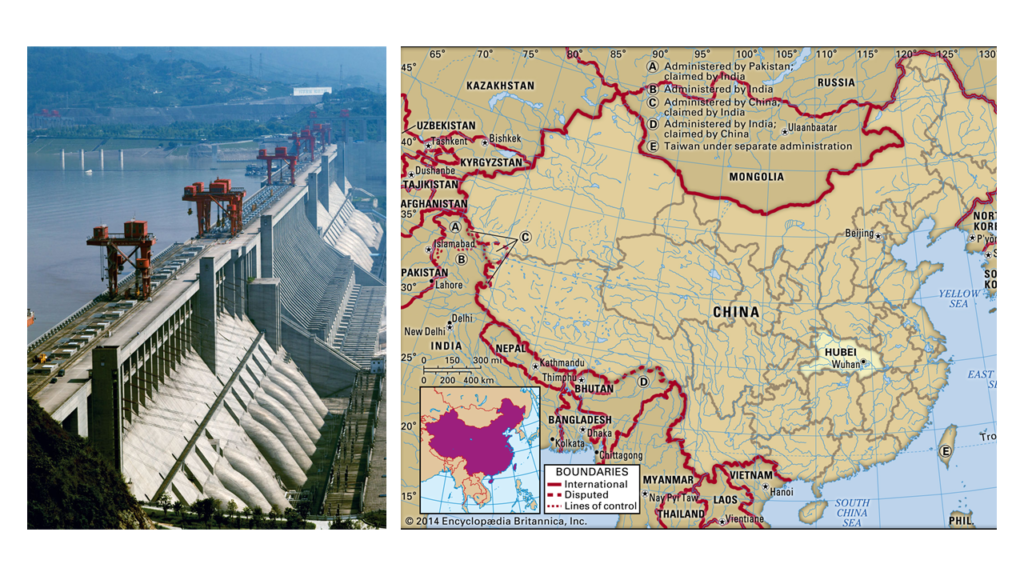
In 2012, China successfully developed the Three Gorges Dam. It was an ambitious project that costed >30 billion USD. But it was a project worth the cost. Three Gorges Dam is hydroelectric gravity dam and has been China’s pride- it has the world’s largest power station in terms of installed capacity (22,500 MW) since 2012. This dam spans over Yangtze river and is located in a land-locked province of Hubei.[22] At the confluence of Yangtze river and its largest tributary, the Han River, is located Hubei’s largest city- Wuhan. Wuhan is also the most populous city in Central China.
Wuhan has been traditional manufacturing hub for decades with three national development zones, four scientific and technological development parks, over 350 research institutes, 1,656 high tech enterprises, numerous enterprise incubators and investments from 230 Fortune Global 500 firms. Wuhan is a research hub- in terms of scientific research outputs it ranks 13th globally. In 2017, Wuhan was designated as a Creative City ,in the field of design, by UNESCO. [23]

But people of Wuhan could have never guessed that all these accomplishments would be overshadowed by what was doomed to emerge from a slimy wet market located within Wuhan- the Huanan Seafood Wholesale Market.
The term “wet market” was not really known to all. Wet markets are markets with many open-air stalls selling fresh seafood, meat, fruits, and vegetables. Many wet markets sell and slaughter live animals on site, including chickens, fish etc. In developing countries like China, India, Bangladesh, African countries they’re a staple of daily life for many. They are called wet markets because they deal with “wet” perishable goods instead of dry, durable goods such as fabric, electronics etc. In “wet” markets, the sight is generally wet- live fish splashing in tubs of water and melting ice keeping innards of slaughtered animals cold [24].

Most wet markets do not trade in wild or exotic animals. But some do. The Huanan market, for example, had a wild animal section where live and slaughtered species were traded. Snakes, beavers, porcupines, and baby crocodiles, among other animals would feature in this market regularly. It has been long recognized that wet markets dealing with wild or exotic animals often are associated with outbreaks of zoonotic diseases. [24][25]
In December 2019, a series of pneumonia cases of unknown cause started emerging in Wuhan with clinical presentations that greatly resembled viral pneumonia. [26] Initially 27 cases were reported on 12 Dec 2019 [27]. Most of these patients presented with dry cough, difficulty in breathing and fever. All these 27 cases were linked to Wuhan’s Huanan Seafood Wholesale Market.[26] On 5 February 2020, Wuhan Municipal Health Committee reported that 59 cases of viral pneumonia with unknown etiology were detected in Wuhan, including seven severe cases; but they found no clear evidence for “human-to-human” transmission [28].
China quickly realized what devil had emerged from its wet market. It was evident that this devil will swiftly start hammering all countries. On January 1, the government temporarily closed the Huanan market, after it was identified as the likely source of many early cases of COVID-19. It remains closed, according to Xu Ling, director of the China office of TRAFFIC, the wildlife trade monitoring organization [25]. Chinese Centre for Disease Control and Prevention (CCDC) immediately swung into action. Throat samples from patients were analyzed to identify what was causing the disease. The virus was soon isolated on 7th January 2020 and was named as Severe Acute Respiratory Syndrome Coronavirus 2 (SARS-CoV-2). The disease was later named as COVID-19 by the World Health Organization (WHO) [26]. On January 26 2020, China issued a ban on trade and consumption of wild animals for food [25].
By 10 March 2020, >48,000 confirmed cases and ~3000 deaths were reported across the globe [29]. On 30th January 2020, the WHO declared COVID-19 to be a Public Health Emergency of International Concern.[26] Finally on 20 February 2020, it officially confirmed that “human-to-human” transmission had occurred.[28]
Within one and a half months, by midnight of 18 February 2020, COVID-19 had spread from Hubei to 34 provinces in China and another 25 countries, resulting in 75,199 confirmed cases with 2009 deaths.[28]
Most COVID-19 infected patients develop mild symptoms such as dry cough, sore throat, and fever. And most cases spontaneously resolve. However, some have developed various fatal complications including organ failure, septic shock, pulmonary oedema, severe pneumonia, and Acute Respiratory Distress Syndrome (ARDS). Notably, patients who required intensive care support were older and had multiple comorbidities including cardiovascular, cerebrovascular, endocrine, digestive, and respiratory disease. Those in intensive care were also more likely to report dyspnoea, dizziness, abdominal pain, and anorexia [26].
COVID-19 spread rapidly. With no known treatment and widespread fear and uncertainty, it quickly crippled most of the healthcare systems across the world. Initially, the highest number of cases was reported in China. But then, by mid-March, Europe had recorded a higher number of cases than anywhere in the world, while COVID cases had spread to more than 160 countries and territories involving six continents. Till November 2020, COVID-19 had taken over 215 countries infecting nearly 50 million and killing more than 1.2 million. It has not only proven to be a medical emergency of global scale but will be recognized as one of the greatest human tragedies after World War II. COVID-19 pandemic has seriously affected economic activities and has had immense socio-economic effects and wide implications on global trade, travel and supply chains, and it considerably disturbed the daily lives of the people across the globe.[29]
Coming Up Next
In the next part (part- 2), we will explore the basics of immunology behind COVID-19 induced cytokine storm that is the real reason why few infected patients land up in hospital and get killed. We will explore this complicated topic is a very simple language such that every reader, irrespective of his/her background will easily understand how COVID-19 has been killing millions.
References
[18] “Gam-COVID-Vac – Wikipedia.” https://en.wikipedia.org/wiki/Gam-COVID-Vac (accessed Jan. 10, 2021).
[21] “China – Wikipedia.” https://en.wikipedia.org/wiki/China (accessed Jan. 10, 2021).
[23] “Wuhan – Wikipedia.” https://en.wikipedia.org/wiki/Wuhan (accessed Jan. 10, 2021).
[24] “Wet market – Wikipedia.” https://en.wikipedia.org/wiki/Wet_market (accessed Jan. 10, 2021).


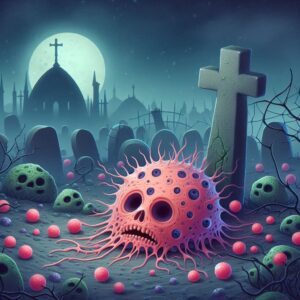
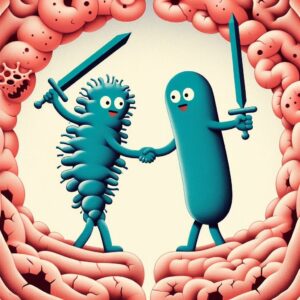
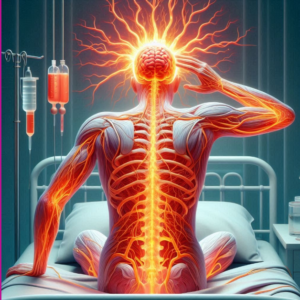

I agree with your point of view, your article has given me a lot of help and benefited me a lot. Thanks. Hope you continue to write such excellent articles.
I have read your article carefully and I agree with you very much. This has provided a great help for my thesis writing, and I will seriously improve it. However, I don’t know much about a certain place. Can you help me?
Reading your article helped me a lot and I agree with you. But I still have some doubts, can you clarify for me? I’ll keep an eye out for your answers.
Thanks for sharing. I read many of your blog posts, cool, your blog is very good.
I really like reading through a post that can make men and women think. Also, thank you for allowing me to comment!
Really enjoyed this post.Really thank you! Will read on…
In addition to that, I’ve shared links to your website throughout all of my social networks!
very informative articles or reviews at this time.
Your article gave me a lot of inspiration, I hope you can explain your point of view in more detail, because I have some doubts, thank you. 20bet
Your latest blog post was truly inspiring and had some great insights. I can’t wait to see what else you have in store.
Your blog is always a highlight of my day
Keep up the amazing work! Can’t wait to see what you have in store for us next.